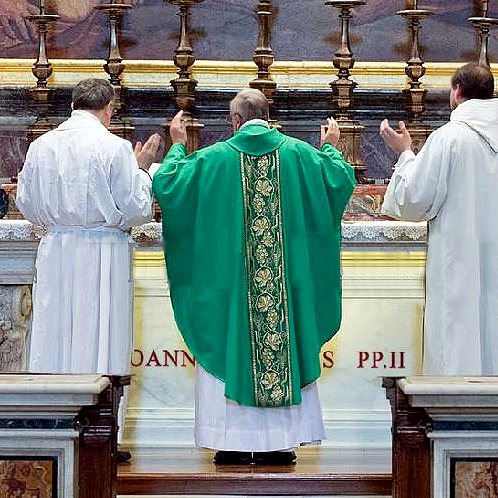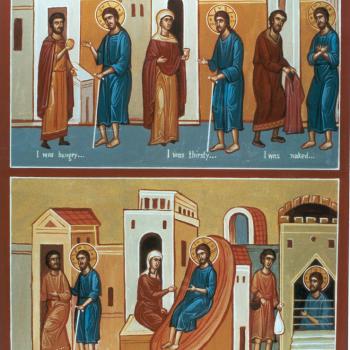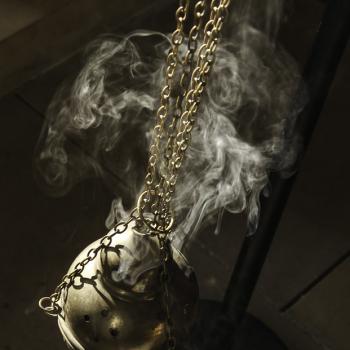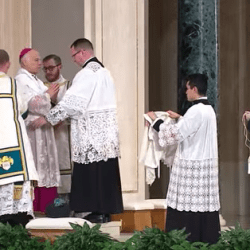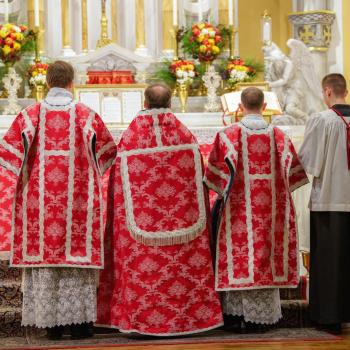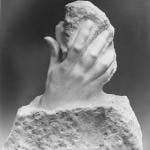Deacon Bill Ditewig offers some history and some insight into Catholic theology surrounding which direction the priest faces during Mass:
Catholic teaching and practice, from the very beginning, reflected great diversity and practice on all of this. In some ancient churches, there was an East-West orientation, and the priest and people would together face the East, where the sun would rise, analogous to God spreading light upon a darkened world. However, there is also significant architectural evidence that this was not a universal practice, with the architecture of other churches facilitating a versus populum (toward the people) orientation. Eventually, the ad orientem orientation became prevalent, but the option to celebrate versus populum remained a permissible option. The point here is that traditional Catholic theology never made the claim that God was only accessible via one orientation or another. Traditional understanding was that priest and people were together in praying to God during the Eucharist. This was true whether facing East or facing the people. The concerns of some Catholic conservatives today seem to rest on the idea that facing the people somehow makes the Mass a kind of “performance” by the priest, and that versus populum is one small step from a Broadway production focused on people and not on God.
…The Latin Rite of the Catholic Church permits, and always has, Masses celebrated both ad orientem and versus populum, although contemporary liturgical law favors versus populum. The entire Catholic Church believes, as expressed by the world’s bishops and confirmed and promulgated by Pope Paul VI at the Second Vatican Council, that Christ is present at Mass in the people assembled, in the proclamation of the Word of God, in the person of the ordained ministers, especially the priest, and in a special way under the forms of bread and wine.

